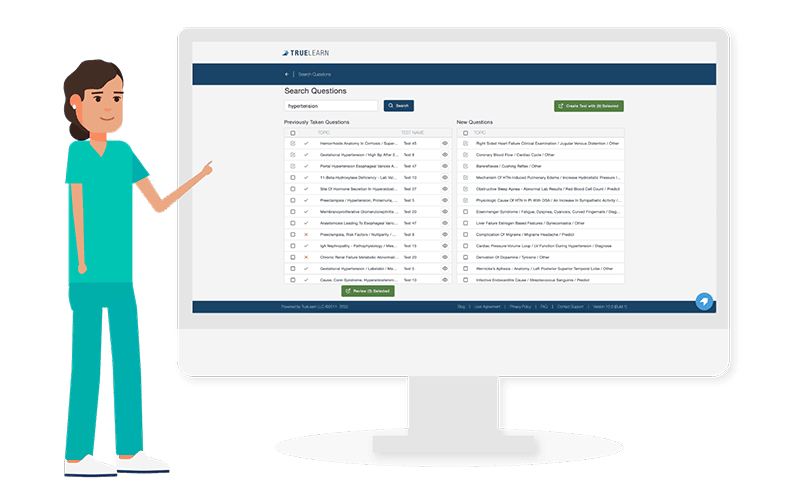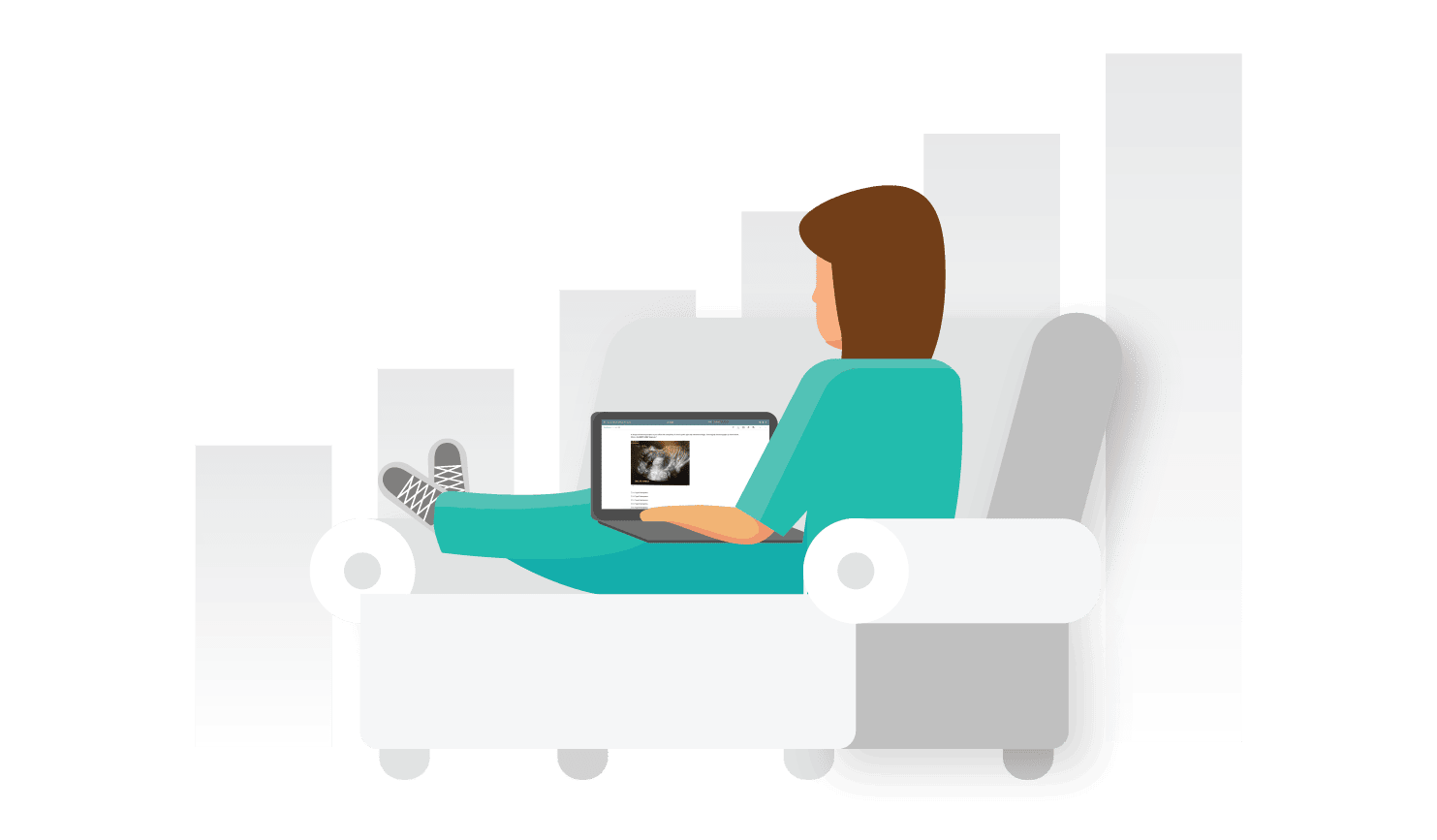COMLEX Level 3 Exam Format: Everything You Need To Know
The goal of COMLEX Level 3 is to certify the passing student as competent in the generalist domains of osteopathic medicine. If the condition could be seen by a general physician in any of the major general medical specialties, it is fair game for the exam. The exam itself is generally taken after completion of medical school and before the end of the first year of residency. Check NBOME.org for test dates. You will want to register early in the year if possible as test dates can fill up quickly.
COMLEX Level 3 Breakdown
COMLEX Level 3 covers all the general disciplines (internal medicine, family medicine, surgery, OB/GYN, OMM, etc.). An exhaustive list can be found on the NBOME website and it is worth taking a look. The exact content of the exam is listed in the Master Blueprint and includes two dimensions with multiple competency domains and clinical presentations. These, unfortunately, are nonspecific, but illustrate a general breakdown and do give actual minimum percentages. For example, OMM principles, practice, and manipulative treatment is at least 10% of the total exam. Osteopathic patient care and procedural skills are another 40%.
In the introduction, you can see the breakdown across every exam, Level 1 through Level 3, and you will notice that the Level 3 exam is much heavier on patient care as opposed to Level 1 in which 60% is application of knowledge, specifically foundational biomedical science knowledge, which is only 10% of 17% represented on the Level 3 exam. Additionally, under the second half of the blueprint, you will find clinical presentations that may be worth reviewing if they are unfamiliar to you.

How Long is COMLEX Level 3?
The COMLEX Level 3 exam is two days long. There are four test sessions of 3.5 hours each with two sessions per day.
What is the COMLEX Level 3 Format?
There are 420 multiple choice questions and 26 clinical decision-making (CDM) cases that have two to four questions each. The CDM questions, unlike the rest of the exam, may include short answer questions that are hand-graded. Additionally, you will encounter questions with both audio or visual components, such as a video of an exam maneuver, a murmur, or lung sounds among other things.
What Is a Good Level 3 Score?
You will need to achieve a minimum score of 350 in order to pass Level 3. In 2021, 97.1% of first-time takers passed, which shows this score is absolutely attainable. Though we do caution anyone thinking that means it’s an easy exam. Make no mistake, Level 3 is hard and you need to prepare accordingly.
How Long Should I Study for COMLEX Level 3?
We get this question a lot and wish there was a perfect answer. Most residents seem to study in the range of two to six months depending on how much time they can dedicate to actual studying.

Figuring Out How Long You Need
This isn’t Level 1 anymore. No one is usually shooting to be in the top 1% and very few people care all that much about their Level 3 scores. Sure, some fellowship programs make take a look at your Level 3 score, but most of the time an average score will be just fine. If you have an easy month, use the nights and weekends to sit down with your favorite review book and the COMLEX Level 3 qbank and most people will do just fine.
If you struggle with standardized tests or did below average on previous exams, then give yourself more time. Say add a couple of weeks or a month extra. Make sure you get through the whole bank if you can with time to go over those marked questions so that you really understand the details. However long it will take you to do the bank, the time it takes to review the answers, and actually learn the material, is how long you will need. You can use your prior studying from Level 1 and 2 to gauge this.
How to Study for COMLEX Level 3
We’re talking about an entire examination here—one that covers four years of medical school and at least one year of residency, so, unfortunately, there is no magical short cut. Like the exams before it, the blueprint can give you an idea of what to cover and what to know.
- Review the Blueprint: First, I would recommend looking at the areas of the blueprint under clinical presentation; that can tell you what kinds of test findings and diagnostic imaging you will be expected to know as well as what patient presentations they consider important. For example, on page 66 of the blueprint, you will see under “Patient Presentations Related to the Integumentary System”, a list of microscopic evaluations, Wood lamp, fungal cultures, and skin biopsy results. You may be expected to interpret these so it may be beneficial to be familiar with them. This is the same for all areas, so if you find that you are weak in certain topics, it may be beneficial to take an hour and do a sweep of the blueprint to see what things you may want to make sure to focus on.
- Practice CDM Cases: Second, you should know that all of the CDM cases are new and focus on management, so spend a good amount of time understanding the next steps in management for basic patient issues (hypertension, diabetes, menstrual irregularities, well-child visit, skin rash, diarrhea, etc.) because this will be expected of any general physician. COMBANK Level 3 has specifically designed our CDM cases to cover these basic topics and is a great place to start.
- Study OMM early and often: Third, don’t forget this is an osteopathic exam and the focus on OMM is not to be forgotten. Study OMM early and often, especially if you haven’t been using OMM since you were in medical school.
Get more guidance on studying for Level 3 .
Advice
If there is one final piece of advice, I would say to get through the entire question bank if possible and to save time, review those questions you got wrong. Read the explanations. Understand the topics, don’t just feel good that you clicked a lot of buttons. Many a resident (myself among them) has passed Level 3 by using COMBANK Level 3 exclusively as a learning tool, not an assessment tool. Good luck!
Written By:
Jeremy Gentile, D.O.
Internal Medicine
![[On-Demand Webinar] COMLEX Level 2 PE Overview](https://truelearn.com/wp-content/uploads/2020/11/Featured-Image_Webinar.png)
